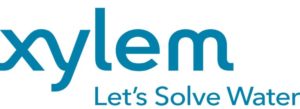Baker Hughes Announces First Quarter Results
Baker Hughes Incorporated announced that, in accordance with generally accepted accounting principles (GAAP), income from continuing operations for the first quarter of 2004 was $95.3 million or $0.29 per share (diluted), ...
... up 90% compared to $50.1 million or $0.15 per share (diluted) for the first quarter of 2003, and down 11% compared to $106.6 million or $0.32 per share (diluted) for the fourth quarter of 2003.
Net income for the first quarter of 2004 was $94.6 million or $0.28 per share (diluted) compared to $44.5 million or $0.13 per share (diluted) for the first quarter of 2003 and $101.6 million or $0.30 per share (diluted) for the fourth quarter of 2003.
Operating profit is a non-GAAP measure comprised of income from continuing operations excluding the impact of certain non-operational items. The company did not have any such non-operational items for exclusion in the first quarter of 2004, the first quarter of 2003 or the fourth quarter of 2003. Operating profit was the same as income from continuing operations for the three periods referenced in this news release. The company believes that operating profit is useful to investors because it is a consistent measure of the underlying results of the company's business. Furthermore, management uses operating profit internally as a measure of the performance of the company's operations. Reconciliation of GAAP and operating results for applicable historical periods can be found on the company's website.
Revenue for the first quarter of 2004 was $1,398.9 million, up 17% compared to $1,200.1 million for the first quarter of 2003 and down 3% compared to $1,439.5 million for the fourth quarter of 2003.
Michael E. Wiley, Baker Hughes' chairman and chief executive officer said, "We are pleased with our strong performance this quarter. Operating profits were up 90% compared to the first quarter a year ago and all of our divisions increased revenues and profits year over year. Revenues from the North America land market, Latin America, China, Africa, and Russia were strong in the first quarter, more than offsetting disappointing activity in the Gulf of Mexico."
Commenting on the outlook for 2004 Mr. Wiley continued, "We have increased our guidance for 2004 revenue and earnings. We expect strong activity in the North American land market to continue, as well as growth in international markets, including Russia, the Caspian, the Middle East and Latin America. As a result of activity and pricing improvements, margins are expected to improve throughout the year."
Financial Flexibility
In September 2002, the company's Board of Directors authorized the company to repurchase up to $275.0 million of its common stock. During the first quarter of 2004, the company did not purchase any shares. In total, the company has purchased approximately 8.1 million shares at a cost of $230.5 million and has authorization remaining to purchase up to $44.5 million in stock. During the first quarter of 2004, debt decreased $32.5 million to $1,451.9 million, and cash increased to $155.7 million. Capital expenditures in the first quarter were $82.5 million compared to depreciation and amortization of $93.7 million. Dividend payments were $38.2 million.
Revenue for the first quarter of 2004 increased 17% compared to the first quarter of 2003 and decreased 3% compared to the fourth quarter of 2003. Each division reported increased revenues in the first quarter of 2004 compared to the first quarter of 2003. Centrilift improved the most year over year with a strong increase in revenue from Latin America -- particularly in Mexico, Venezuela, Ecuador and Colombia. Baker Petrolite revenue increased 3% and Baker Atlas and Hughes Christensen revenues were flat compared to the fourth quarter of 2003. Seasonal export orders, which tend to occur in the latter half of the calendar year, impacted sequential performance at every division.
The non-GAAP measure of pre-tax operating margin, which is operating profit before tax divided by revenue, was 14.6% for the first quarter of 2004 compared to 15.1% in the fourth quarter of 2003 and 11.8% for the first quarter a year ago. Operating margins improved at every division compared to the first quarter of 2003. Hughes Christensen's operating margin improved and Baker Petrolite's operating margin was unchanged compared to the fourth quarter of 2003. The operating margin at INTEQ was below 10% in the first quarter of 2004.
Corporate, Net Interest and Other
Corporate, net interest and other expenses were $68.3 million in the March 2004 quarter, up $7.6 million from the March 2003 quarter and up $6.7 million from the December 2003 quarter. The increase in the March 2004 quarter compared to the March 2003 quarter was primarily from increased costs associated with our focus on compliance, including our Sarbanes-Oxley implementation, legal investigations, and increased staffing in our legal, compliance and audit groups. The increase in the March 2004 quarter compared to the December 2003 quarter was primarily the result of reduced gains from foreign currency transactions in the March 2004 quarter, combined with lower legal and investigation costs in the December 2003 quarter.
Outlook
The following statements are based on current expectations. These statements are forward-looking, and actual results may differ materially. Factors affecting these forward-looking statements are detailed below under the section titled "Forward-Looking Statements" in this news release. These statements do not include the potential impact of any acquisition, disposition, merger, joint venture or other transaction that could occur in the future. Statements regarding WesternGeco are based on information provided by WesternGeco and, therefore, are subject to the accuracy of that information. Additionally, forward-looking statements relating to WesternGeco are also subject to the factors listed under "Forward-Looking Statements" in this news release.
Revenues for the year 2004 are expected to be up 6% to 8% compared to the year 2003. Revenues in the second quarter 2004 are expected to be up 7% to 9% compared to the second quarter 2003 and up 1% to 3% compared to the first quarter 2004.
WesternGeco is expected to contribute $20 to $25 million in equity in income of affiliates for the year 2004 (compared to a loss of $10.3 million in 2003) and $3 to $7 million for the second quarter 2004.
Corporate and other expenses, excluding interest expense, are expected to be between $175 and $185 million for the year 2004 and approximately $48 to $52 million in the second quarter 2004.
Net interest expense is expected to be between $70 and $80 million for the year 2004 and approximately $20 to $23 million in the second quarter 2004.
Income from continuing operations per diluted share is expected to be between $1.25 and $1.40 for the year 2004. Income from continuing operations per diluted share is expected to be between $0.29 and $0.32 in the second quarter 2004.
Capital spending is expected to be between $320 and $340 million for the year 2004. Baker Hughes' expectation regarding its level of capital expenditures is only its forecast regarding this matter. This forecast may be substantially different from actual results. In addition to the factors described under "Forward-Looking Statements" below, the following factors could affect levels of capital expenditures: the accuracy of the company's estimates regarding its spending requirements; the occurrence of any unanticipated transaction or research and development opportunities; changes in the company's strategic direction; and the need to replace any unanticipated losses in capital assets.
Depreciation and amortization expense is expected to be between $370 and $390 million for the year 2004. Baker Hughes' expectation regarding its depreciation and amortization expense is only its forecast regarding this matter. This forecast may be substantially different from actual results, which could be impacted by an unexpected increase in the company's assets that are subject to depreciation or amortization or an unexpected casualty, impairment or other loss in those assets.
The tax rate on operating results for the year 2004 is expected to be approximately 34.5%. Baker Hughes' expectation regarding its tax rate is only its forecast regarding this matter. This forecast may be substantially different from actual results. In addition to the factors described under "Forward-Looking Statements" below, the following factors could affect the tax rate: the level and sources of the profitability of the company; changes in tax laws or tax rates in the jurisdictions in which the company operates; resolution of audits by various tax authorities; and the ability of the company to fully utilize tax loss carry-forwards and credits in various jurisdictions.
Forward-Looking Statements
This news release (and oral statements made regarding the subjects of this release, including on the conference call announced herein) contain forward- looking statements within the meaning of Section 27A of the Securities Act of 1933, as amended, and Section 21E of the Securities Exchange Act of 1934, as amended. The words "expect," "expected," "will," "plans," "planning," and similar expressions are intended to identify forward-looking statements.
General Outlook
Oilfield Operations Segment: Baker Hughes' expectation regarding its outlook for its oilfield businesses (including, without limitation, the company's oilfield operations), changes in profitability and growth in those businesses and the oil and gas industry are only its forecasts regarding these matters. These forecasts may be substantially different from actual results, which are affected by the following factors: the level of petroleum industry exploration and production expenditures; drilling rig and oil and gas industry manpower and equipment availability; the company's ability to implement and effect price increases for its products and services; the company's ability to control its costs; the availability of sufficient manufacturing capacity and subcontracting capacity at forecasted costs to meet the company's revenue goals; the effect of competition, particularly the ability of the company to introduce new technology on its forecasted schedule and at its forecasted cost; the ability of the company's competitors to capture market share; the company's ability to retain or increase its market share; potential impairment of long-lived assets; world economic conditions; the price of, and the demand for, crude oil and natural gas; drilling activity; seasonal and other weather conditions, such as hurricanes, that affect the demand for energy, and severe weather conditions that affect exploration and production activities; the legislative and regulatory environment in the United States and other countries in which the company operates; outcome of government and internal investigations and legal proceedings; changes in environmental regulations; unexpected, adverse outcomes or material increases in liability with respect to sites where the company has been named as a potentially responsible party; the discovery of new environmental sites; the discharge of hazardous materials or hydrocarbons into the environment; Organization of Petroleum Exporting Countries ("OPEC") policy and the adherence by OPEC nations to their OPEC production quotas; war, military action or extended period of international conflict, particularly involving the United States, Middle East or other major petroleum-producing or consuming regions; any future acts of war, armed conflicts or terrorist activities; civil unrest or in-country security concerns where the company operates; expropriation; the development of technology by Baker Hughes or its competitors that lowers overall finding and development costs; new laws and regulations that could have a significant impact on the future operations and conduct of all businesses; labor-related actions, including strikes, slowdowns and facility occupations; the condition of the capital and equity markets in general; adverse foreign exchange fluctuations and adverse changes in the capital markets in international locations where the company operates; and the timing of any of the foregoing.
Oilfield Pricing Changes: Baker Hughes' expectations regarding pricing changes for its products and services are only its expectations regarding pricing. Actual pricing changes could be substantially different from the company's expectations, which are affected by many of the factors listed above in "General Outlook -- Oilfield Operations Segment," as well as existing legal and contractual commitments to which the company is subject.
Baker Hughes is a leading provider of drilling, formation evaluation, completion and production products and services to the worldwide oil and gas industry.
Source: Baker Hughes, a GE comany LLC





